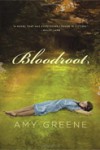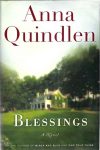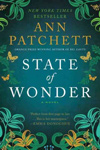





























|
2014
Reading Group Selections
|
|
|
January
7, 2014

The Many Deaths of the Firefly Brothers
by Tom Mullen
At
the start of Mullen's compelling second novel, set during
the heyday of J. Edgar Hoover's war on crime in the 1930s,
violent bank robbers Jason and Whit Fireson (aka the Firefly
Brothers) wake up in an Indiana morgue, having miraculously
survived bullet wounds that led the authorities to triumphantly
announce their deaths. The pair escape and inform the third
Fireson brother, Weston, and their mother, that they're alive.
Meanwhile, the embarrassed local police report that ghouls
stole Jason and Whit's corpses.
This
is but the first of a number of fantastic episodes in which
the criminals cheat death, with no logical explanation. Despite
the surrealism, Mullen (The Last Town on Earth) makes the
despair of the Great Depression palpable, as his antiheroes
become folk icons to the downtrodden people of the Midwest
resentful of a government that can't help them. Readers comfortable
with significant narrative ambiguities will be engrossed.
SOURCE:
Copyright © Reed Business Information, a division of
Reed Elsevier Inc. All rights reserved.
|
February
4, 2014

Wide
Sargasso Sea
by Jean Rhys
In
1966 Jean Rhys reemerged after a long silence with a novel
called Wide Sargasso Sea. Rhys had enjoyed minor literary
success in the 1920s and '30s with a series of evocative
novels featuring women protagonists adrift in Europe, verging
on poverty, hoping to be saved by men. By the '40s, however,
her work was out of fashion, too sad for a world at war.
And Rhys herself was often too sad for the world--she was
suicidal, alcoholic, troubled by a vast loneliness. She
was also a great writer, despite her powerful self-destructive
impulses.
Wide Sargasso Sea is the story of Antoinette Cosway, a Creole
heiress who grew up in the West Indies on a decaying plantation.
When she comes of age she is married off to an Englishman,
and he takes her away from the only place she has known--a
house with a garden where "the paths were overgrown
and a smell of dead flowers mixed with the fresh living
smell. Underneath the tree ferns, tall as forest tree ferns,
the light was green. Orchids flourished out of reach or
for some reason not to be touched."
The
novel is Rhys's answer to Jane Eyre. Charlotte Brontë's
book had long haunted her, mostly for the story it did not
tell--that of the madwoman in the attic, Rochester's terrible
secret. Antoinette is Rhys's imagining of that locked-up
woman, who in the end burns up the house and herself. Wide
Sargasso Sea follows her voyage into the dark, both from
her point of view and Rochester's. It is a voyage charged
with soul-destroying lust. "I watched her die many
times," observes the new husband. "In my way,
not in hers. In sunlight, in shadow, by moonlight, by candlelight.
In the long afternoons when the house was empty."
Rhys
struggled over the book, enduring rejections and revisions,
wrestling to bring this ruined woman out of the ashes. The
slim volume was finally published when she was 70 years
old. The critical adulation that followed, she said, "has
come too late." Jean Rhys died a few years later, but
with Wide Sargasso Sea she left behind a great legacy, a
work of strange, scary loveliness. There has not been a
book like it before or since. Believe me, I've been searching.
--Emily White
SOURCE:
Copyright © Amazon.com. All rights reserved.
|
|
March
4, 2014

Bloodroot
by Amy Greeene
Amazon
Best Books of the Month, January 2010: Bloodroot is that rare
sort of family saga that feels intimate instead of epic. Set
in Tennessee’s Smoky Mountains, it’s told largely
in tandem voices that keep watchful eyes on Myra Lamb. She
is a child of the mountain, tied to the land in ways that
mystify and enchant those around her. There’s magic to
Myra--perhaps because she has the remarkable blue eyes foretold
by a nearly-forgotten family curse--but little fantasy to
her life. Bloodroot is as much about the Lambs as it is about
a place, one that becomes ever more vivid as generations form,
break free, and knit back together. Its characters speak plainly
but true, they are resilient and flawed and beautiful, and
there's a near-instant empathy in reading their stories, which--even
in their most visceral moments--are alluring and wonderful.
--Anne Bartholomew
SOURCE:
Copyright © Amazon.com. All rights reserved.
|
|
April
1, 2014
Guest
Speaker Fran Stewart

Fran
Stewart fell in love with words at an early age. An award-winning
mystery writer and member of the National League of American
Pen Women, Sisters in Crime, and the Atlanta Writers Club,
Fran conveys her indomitable spirit, warmth, and humor in
her writing. The people and events of her life lend form and
substance to her novels, short stories, essays, and poems,
and serve as a voice for communicating life’s many lessons.
A
true Renaissance woman, Stewart writes, edits, knits, sings,
practices Reiki, shares her house with rescued cats of all
ages, sizes, and personalities, is well-respected as a public
speaker, loves a good laugh, and embraces life with passion.
SOURCE:
Copyright © FranStewart.com. All rights reserved.

Indigo As An Iris
by Fran Stewart
In
Fran Stewart s most emotionally charged novel so far, small-town
librarian Biscuit McKee confronts Glaze, her bipolar sister
on the verge of deep depression. Glaze has an ex-boyfriend
sitting in jail and plotting ways to get even with Glaze through
kidnap and extortion. Biscuit s good friend Margaret becomes
a pawn in this attempt for revenge. Complications result in
mistaken identities, dire misunderstandings, and a kidnapping
gone horribly awry. Marmalade, Biscuit s orange and white
tabby cat is once again misunderstood by her humans. They
think she s only purring.
SOURCE:
Copyright © Amazon.com. All rights reserved.
|
May
6, 2014

Blessings
by Anna Quindlen
Quindlen's
novel of redemption and second chances is given a warm,
sympathetic reading by Allen. Skip Cuddy is one of life's
losers: abandoned by his parents as a child and railroaded
by so-called "friends" into a crime that wasn't
his fault as an adult. But he's content with his new job
as caretaker of Blessings, the estate of elderly, isolated
Lydia Blessing. When a frightened unwed teenager leaves
her newborn by Skip's garage apartment (instead of the estate's
front door, as planned), Skip finds a new lease on life
in taking care of the infant. And when Lydia discovers the
baby and agrees to help Skip raise her, she too finds new
meaning in life, as well as a mutually rewarding friendship
with Skip. (Of course, eventually the baby's mother wants
her back.) Allen's voice is filled with compassion, and
she does a fine job differentiating the characters. Particularly
memorable are the voices of elderly Lydia Blessing; Korean
maid Nadine; and Chris, a sleazy, manipulative friend of
Skip's.
SOURCE:
Copyright © 2002 Reed Business Information, Inc., a
division of Reed Elsevier Inc. All rights reserved.
|
The
Summer Series of Science
June 3, 2014

Krakatoa:
The Day the World Exploded
by Simon Winchester
An
erudite, fascinating account by one of the foremost purveyors
of contemporary nonfiction, this book chronicles the underlying
causes, utter devastation and lasting effects of the cataclysmic
1883 eruption of the volcano island Krakatoa in what is
now Indonesia. Winchester (The Professor and the Madman;
The Map That Changed the World) once again demonstrates
a keen knack for balancing rich and often rigorous historical
detail with dramatic tension and storytelling. Rather than
start with brimstone images of the fateful event itself,
Winchester takes a broader approach, beginning with his
own viewing of the now peaceful remains of the mountain
for a second time in a span of 25 years-and being awed by
how much it had grown in that time. This nod to the earth's
ceaseless rejuvenation informs the entire project, and Winchester
uses the first half of the text to carefully explain the
discovery and methods of such geological theories as continental
drift and plate tectonics. In this way, the vivid descriptions
of Krakatoa's destruction that follow will resonate more
completely with readers, who will come to appreciate the
awesome powers that were churning beneath the surface before
it gave way. And while Winchester graphically illustrates,
through eyewitness reports and extant data, the human tragedy
and captivating scientific aftershocks of the explosion,
he is also clearly intrigued with how it was "a demonstration
of the utterly confident way that the world, however badly
it has been wounded, picks itself up, continues to unfold
its magic and its marvels, and sets itself back on its endless
trail of evolutionary progress yet again." His investigations
have produced a work that is relevant to scholars and intriguing
to others, who will relish it footnotes and all.
SOURCE:
Copyright © 2003 Reed Business Information, Inc., a
division of Reed Elsevier Inc. All rights reserved.
The
documentary movie will be presented on Monday, June 2, 2014
at 6:00 PM
|
The
Summer Series of Science
July 1, 2014

The
Men Who Stare at Goats
by Jon Ronson
This
exploration of the U.S. military's flirtation with the supernatural
is at once funny and tragic. It reads like fiction, with
plenty of dialogue and descriptive detail, but as Ronson's
investigation into the government's peculiar past doings
creeps into the present-and into Iraq-it will raise goose
bumps. As Ronson reveals, a secret wing of the U.S. military
called First Earth Battalion was created in 1979 with the
purpose of creating "Warrior Monks," soldiers
capable of walking through walls, becoming invisible, reading
minds and even killing a goat simply by staring at it. Some
of the characters involved seem well-meaning enough, such
as the hapless General Stubblebine, who is "confounded
by his continual failure to walk through his wall."
But Ronson (Them: Adventures with Extremists) soon learns
that the Battalion's bizarre ideas inspired some alarming
torture techniques being used in the present-day War on
Terror. One technique involves subjecting prisoners to 24
hours of Barney the Purple Dinosaur's song, "I Love
You," and another makes use of the Predator, a small,
toy-like object designed by military martial arts master
Pete Brusso that can inflict a large amount of pain in many
different ways ("You can take eyeballs right out...
with this bit," Brusso tells Ronson). Ronson approaches
the material with an open mind and a delightfully dry sense
of humor, which makes this an entertaining, if unsettling,
read. Indeed, as the events recounted here grow ever more
curious-and the individuals Ronson meets more disturbing-it's
necessary to remind oneself of Ronson's opening words: "This
is a true story."
SOURCE:
Copyright © Reed Business Information, Inc., a division
of Reed Elsevier Inc. All rights reserved.
The
movie, "The Men Who Stare at Goats" starring George
Clooney will be presented on
Monday June 30, 2014 at 6:00 PM
|
|
August
5, 2014

State
of Wonder
by Ann Patchett
Amazon
Best Books of the Month, June 2011: In State of Wonder, pharmaceutical
researcher Dr. Marina Singh sets off into the Amazon jungle
to find the remains and effects of a colleague who recently
died under somewhat mysterious circumstances. But first she
must locate Dr. Anneck Swenson, a renowned gynecologist who
has spent years looking at the reproductive habits of a local
tribe where women can conceive well into their middle ages
and beyond. Eccentric and notoriously tough, Swenson is paid
to find the key to this longstanding childbearing ability
by the same company for which Dr. Singh works. Yet that isn’t
their only connection: both have an overlapping professional
past that Dr. Singh has long tried to forget. In finding her
former mentor, Dr. Singh must face her own disappointments
and regrets, along with the jungle’s unforgiving humidity
and insects, making State of Wonder a multi-layered atmospheric
novel that is hard to put down. Indeed, Patchett solidifies
her well-deserved place as one of today’s master storytellers.
Emotional, vivid, and a work of literature that will surely
resonate with readers in the weeks and months to come, State
of Wonder truly is a thing of beauty and mystery, much like
the Amazon jungle itself. --Jessica Schein
SOURCE:
Copyright © Amazon.com. All rights reserved.
|
|
September
2, 2014

The
House at Riverton
by
Kate Morton
This
debut page-turner from Australian Morton recounts the crumbling
of a prominent British family as seen through the eyes of
one of its servants. At 14, Grace Reeves leaves home to work
for her mother's former employers at Riverton House. She is
the same age as Hannah, the headstrong middle child who visits
her uncle, Lord Ashbury, at Riverton House with her siblings
Emmeline and David. Fascinated, Grace observes their comings
and goings and, as an invisible maid, is privy to the secrets
she will spend a lifetime pretending to forget. But when a
filmmaker working on a movie about the family contacts a 98-year-old
Grace to fact-check particulars, the memories come swirling
back. The plot largely revolves around sisters Hannah and
Emmeline, who were present when a family friend, the young
poet R.S. Hunter, allegedly committed suicide at Riverton.
Grace hints throughout the narrative that no one knows the
real story, and as she chronicles Hannah's schemes to have
her own life and the curdling of younger Emmeline's jealousy,
the truth about the poet's death is revealed. Morton triumphs
with a riveting plot, a touching but tense love story and
a haunting ending.
SOURCE:
Copyright © Reed Business Information, Inc., a division
of Reed Elsevier Inc. All rights reserved.
|
|
October
7, 2014

Even
the Stars Look Lonesome
by Maya Angelou
As
in Wouldn't Take Nothing for My Journey Now, famed poet and
author Angelou (I Know Why the Caged Bird Sings) casts a keen
eye inward and bares her soul in a slim volume of personal
essays. This collection is narrower in scope than Angelou's
earlier book and the sense of racial pride is stronger, more
compelling. But all of her opinions are deeply rooted and
most are conveyed with a combination of humility, personable
intelligence and wit. Like a modern-day Kahlil Gibran, Angelou
offers insights on a wide range of topics-Africa, aging, self-reflection,
independence and the importance of understanding both the
historical truth of the African American experience and the
art that truth inspired. Women are a recurrent topic, and
in "A Song to Sensuality," she writes of the misconceptions
the young (her younger self included) have of aging. "They
Came to Stay" is a particularly inspirational piece paying
homage to black women: "Precious jewels all." Even
Oprah Winfrey (to whom the previous collection was dedicated)
serves as subject matter and is likened to "the desperate
traveler who teaches us the most profound lesson and affords
us the most exquisite thrills." In her final essay, Angelou
uses the story of the prodigal son to remind readers of the
value of solitude: "In the silence we listen to ourselves.
Then we ask questions of ourselves. We describe ourselves
to ourselves, and in the quietude we may even hear the voice
of God."
SOURCE:
Copyright © Reed Business Information, Inc., a division
of Reed Elsevier Inc. All rights reserved.
|
|
November
4, 2014

To
Kill a Mockingbird
by Harper Lee
"When
he was nearly thirteen, my brother Jem got his arm badly broken
at the elbow.... When enough years had gone by to enable us
to look back on them, we sometimes discussed the events leading
to his accident. I maintain that the Ewells started it all,
but Jem, who was four years my senior, said it started long
before that. He said it began the summer Dill came to us,
when Dill first gave us the idea of making Boo Radley come
out."
Set
in the small Southern town of Maycomb, Alabama, during the
Depression, To Kill a Mockingbird follows three years in the
life of 8-year-old Scout Finch, her brother, Jem, and their
father, Atticus--three years punctuated by the arrest and
eventual trial of a young black man accused of raping a white
woman. Though her story explores big themes, Harper Lee chooses
to tell it through the eyes of a child. The result is a tough
and tender novel of race, class, justice, and the pain of
growing up.
Like the
slow-moving occupants of her fictional town, Lee takes her
time getting to the heart of her tale; we first meet the Finches
the summer before Scout's first year at school. She, her brother,
and Dill Harris, a boy who spends the summers with his aunt
in Maycomb, while away the hours reenacting scenes from Dracula
and plotting ways to get a peek at the town bogeyman, Boo
Radley. At first the circumstances surrounding the alleged
rape of Mayella Ewell, the daughter of a drunk and violent
white farmer, barely penetrate the children's consciousness.
Then Atticus is called on to defend the accused, Tom Robinson,
and soon Scout and Jem find themselves caught up in events
beyond their understanding. During the trial, the town exhibits
its ugly side, but Lee offers plenty of counterbalance as
well--in the struggle of an elderly woman to overcome her
morphine habit before she dies; in the heroism of Atticus
Finch, standing up for what he knows is right; and finally
in Scout's hard-won understanding that most people are essentially
kind "when you really see them." By turns funny,
wise, and heartbreaking, To Kill a Mockingbird is one classic
that continues to speak to new generations, and deserves to
be reread often.
SOURCE:
Copyright © Amazon.com. All rights reserved.
|
|
December
9, 2014
Date Changed From December 2

Are
You There God It's Me Margaret
by Judy Blume
If
anyone tried to determine the most common rite of passage
for preteen girls in North America, a girl's first reading
of Are You There God? It's Me, Margaret would rank near the
top of the list. Judy Blume and her character Margaret Simon
were the first to say out loud (and in a book even) that it
is normal for girls to wonder when they are ever going to
fill out their training bras.
Puberty
is a curious and annoying time. Girls' bodies begin to do
freakish things--or, as in Margaret's case, they don't do
freakish things nearly as fast as girls wish they would. Adolescents
are often so relieved to discover that someone understands
their body-angst that they miss one of the book's deeper explorations:
a young person's relationship with God.
Margaret
has a very private relationship with God, and it's only after
she moves to New Jersey and hangs out with a new friend that
she discovers that it might be weird to talk to God without
a priest or a rabbi to mediate. Margaret just wants to fit
in! Who is God, and where is He when she needs Him? She begins
to look into the cups of her training bra for answers ...
SOURCE:
Copyright © Amazon.com. All rights reserved.
|
|














